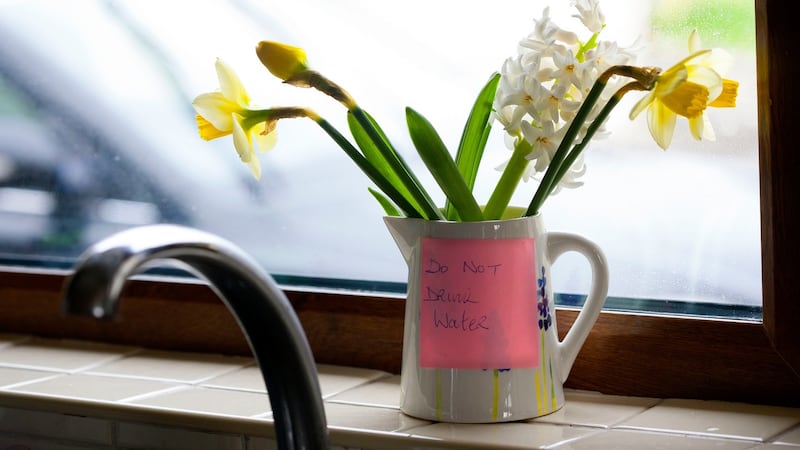Helen Rochford-Brennan has sticky notes beside every tap in her home with a simple message: do not drink water.
She and husband Seán Brennan are among an estimated 14,000 people affected by a boil water notice sparked by cryptosporidium in the Lough Talt water supply, Co Sligo.
Because Helen has early onset Alzheimer’s disease she is fearful of forgetting about the restrictions and using contaminated water to brush her teeth or in food preparation.
“My husband has a chronic illness so it is really alarming when you consider how dangerous it could be,” she says. “Water is a basic human right and this has been going on for too long.”
The Tubbercurry resident chairwoman of the European Working Group for People With Dementia and has addressed the European Parliament on issues facing people with dementia.
“I really believe that if it happened on the east coast it would have been sorted out a long time ago,” she says.
People in the Lough Talt catchment area – which includes Tubbercurry, Ballymote and a large rural hinterland – have had to boil water for 10 of the past 13 months. The problem is exacerbated because of the conflict between the need for an upgraded water treatment plant and a requirement to protect a local Special Area of Conservation, the Lough Hoe Bog SAC, under the European Habitats Directive.
Now residents are hoping that history will be made if the planning authorities are allowed to activate a public interest clause in the directive, known as the Imperative Reasons of Overriding Public Importance. But this has never been used in Ireland before.
It would permit Sligo County Council to green light the new treatment plant because of the “urgent public health imperative”.
The council has referred the Irish Water planning application for the €6 million to €7million treatment plant to Minister for Local Government Eoghan Murphy, as required under legislation.
Two separate boil water notices have been issued at Lough Talt since February 2018, the most recent one on January 11th.
A previous application in 2015 by Irish Water for a treatment plant was refused by the county council, and also by An Bord Pleanála, because of the potential impact on the special area of conservation.

The latest planning application was accompanied by a Natura Impact Statement. It notes that the proposed development would have a “significant adverse affect” on the area of conservation but the council argues that because there are “no reasonable alternative options” , the imperative reasons measure is justified.
Lough Talt Water Warriors spokeswoman Kellie Cadman says that even if permission is granted, Irish Water has acknowledged it could take two years to provide the facility. The water warriors lobby group has organised a public meeting on the issue for April 1st.
More than 5,000 people have already signed a petition calling for a mobile UV filtration unit to be provided while work is ongoing.
A temporary solution?
The national utility says the proposed treatment plant is a temporary solution with a life span of no more than 10 years, pending the construction of a new plant at Lough Conn some 40km away. But Cadman says young families and the vulnerable elderly cannot wait for two years.
“At least my children are teenagers and you can explain the dangers to them, but this is a huge burden for families with babies and young children,” she adds.
A spokesman for the planning department said it had forwarded the Sligo County Council submission to Minister for Heritage Josepha Madigan. He said the imperative reasons process has never been used in the planning system before, “so much will depend on what recommendations the . . . [department] make on the proposal”.
The spokesman added that Ministers in both departments have a consultative role, but the ultimate decision on whether to grant planning permission would lie with the local authority.
MEP Marian Harkin says the hardship endured by 14,000 Irish Water customers could have been avoided when the Habitats Directive was implemented 20 years ago if the State had not adopted a “do nothing” attitude.
She says special areas of conservation were designated without any actions being taken and sometimes without even the knowledge of landowners.
“They were just lines on a map,” says the Independent MEP. “Our national policy has been to designate areas and just walk away.”
The Lough Hoe Bog Special Area of Conservation aims to protect several species including the Geyer’s whorl snail, which Cadman maintains has not been seen for 150 years.
“I think when people’s health is at risk, the snail goes out the window,” she says.











